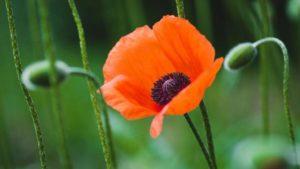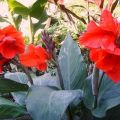Planting and caring for calistegia in the open field, cultivation features
Calistegia can be a real pride for every gardener. With its help, you can implement many interesting solutions when creating a landscape design for a personal plot and enjoy the beautiful flowering of culture throughout the summer season. For this, it is important to know how to plant a calistegia and become familiar with all the nuances of caring for a plant.
Characteristics of the calistegia plant
Calistegia belongs to the plant genus of the Bindweed family. It is presented in the form of a herbaceous liana-shaped perennial, which has a branched creeping rhizome and curly stems reaching up to 4 m in length. The leaves are in the form of a triangle, pointed at the end, alternately held on the stems with the help of long petioles.
The flowers are single, white or pink, 2-9 cm long. They delight with flowering from June or July until the coldest days. After that, the fruit is formed in the form of a dry box, which consists of 4 valves.
Use in landscape design
Kalistegia is suitable for vertical gardening of arches, gazebos, benches. It is in harmony with climbing crops such as clematis, kampsis. Liana can decorate the background of flower beds by placing it on the fence, wall. Low-growing summer perennials are good companions: roses, conifers, petunias, marigolds. Climbing plants are able to decorate any unsightly buildings, fences, giving the site originality.
Beneficial features
Representatives of the Kalistegiya clan are actively used by traditional healers from China for the manufacture of medicinal drugs. In their opinion, the foliage and stems of the plant have useful properties, and tinctures, decoctions based on them help:
- normalize body temperature indicators;
- get rid of prolonged constipation;
- quickly heal wounds on the skin;
- return high-quality and healthy sleep;
- quickly remove excess fluid from the body.

Kalistegia belongs to poisonous plants and is used only for decorative purposes, its ingestion is strictly contraindicated. It is not used in formal medicine or other industrial sectors.
Popular varieties for growing in the garden
This culture has 25 varieties, some of which have long taken root in the plots, delighting gardeners with the beauty of their flowering.
Fluffy
A perennial plant reaches a height of 4 m. The stems are covered with elongated foliage, which has a leathery surface, painted in bright green. Attention is drawn to flowers 4-9 cm in diameter, which can be simple and double. Their petals are pink with a darkish base.
Kalistegia blooms in late June, early July.

Flore Plena
Pink flowers, 9 cm in diameter, look great against the background of green leaves covered with fluff.
Bloom lasts from July to September.
Multiplex
An ornamental perennial shrub, the stem length of which is more than 3 m. This charming seductress gained popularity thanks to its large double pink flowers.
Flowering pleases from July to frost.

Fence
A beautiful perennial plant with branches that grow up to 3 m in length. It is considered a malicious weed due to its highly branched rhizome, which extends more than 1 meter into the soil. The type of calistegia is popular due to its triangular leaves with a sharp top, single, simple flowers, painted in white, light pink color.
It fascinates with the beauty of its flowering in early summer.
Ivy, or Japanese
The main feature of this perennial is the three-lobed leaves, thanks to which the variety was named ivy-leaved. Calistegia flowers have a pale pink color and a diameter of up to 9 cm.
Hairy
The calistegia species is a hairy perennial that has a long cord-like rhizome and stems up to 80 cm long, which are covered with oblong, broad-lanceolate pointed leaves and simple pink flowers up to 5 cm in diameter.
Blooms in June-July.

Conditions for growth and flowering
Kalistegia is not a capricious plant that grows under any conditions. But for successful growth and flowering, it is recommended to take care of sufficient lighting, optimal temperature indicators and soil fertility.
Lighting
It is better to grow calistegia in lighted areas. The culture feels great in partial shade, but in an open area flowering occurs 2-3 weeks earlier and is abundant.
Calistegia grows well and blooms profusely in areas that are illuminated by the sun in the morning and shaded in the afternoon..

Temperature regime
Favorable for development and flowering is considered a temperature in the range from 22 to 25 degrees.
If the temperature rises above 30, then the leaves of the plant may wither, therefore, when planting, it is important to choose a place correctly, providing the flowers not only with bright diffused lighting, but also with the optimal temperature regime.
Required soil composition
Kalistegiya is unpretentious to the composition of the soil. Peat, deciduous, loamy soil is suitable for her. The close location of groundwater can be dangerous for the plant, therefore, it is required to organize high-quality drainage.
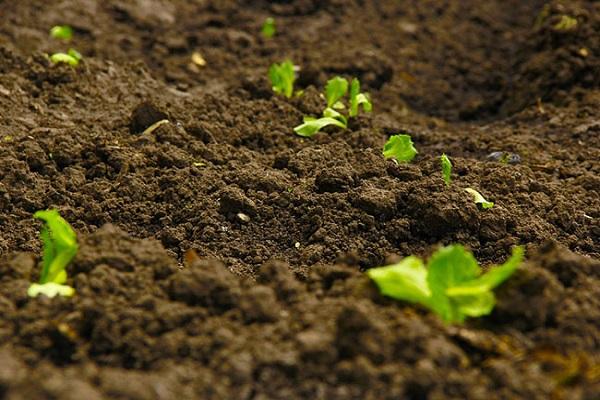
How to plant a crop outdoors
Before planting a plant in open ground, you need to prepare the selected place for these purposes, preferably in the fall, by loosening and adding nutrients such as mineral fertilizers, compost, ash.
Timing
It is recommended to plant in open soil in spring, in early May.
Technology
To correctly plant the calistegia, you need to perform the following procedure:
- Make shallow holes in the prepared area and moisten them.
- Plant the seedlings, keeping a distance of 5-30 cm between them. If it is necessary to mask an unsightly wall or structure, then the calistegia should be placed denser.
- Watering.
- Take care of the fence, as the rhizome can grow strongly.
- Establish a reliable support around which the plant can curl unhindered.
Further care will contribute to the normal growth and development of calistegy, as well as abundant flowering.

We organize proper flower care
For the full development of calistegia and the correct formation of a shrub, you need to take care of it, and then, feeling attention, it will respond with magnificent flowering and become a luxurious green decoration in the garden.
Watering and feeding
Liana requires regular, moderate watering. The plant is able to withstand short-term drought.
Kalistegia needs nutrients, therefore, from May to September it needs to be fed 2 times a month, using mineral fertilizers, spending 1 tablespoon per 1m2 landing. Also, the culture responds well to organic matter and ash.
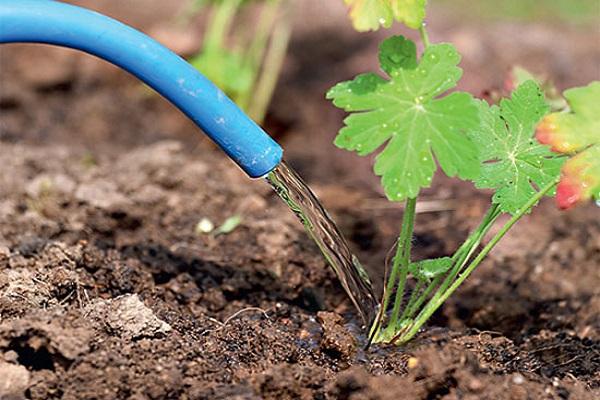
Support
The plant needs a support, which will serve as such improvised materials as wire, lattice, pillars. The main thing is that the diameter of the supports is no more than 10 cm. Otherwise, the stems will hardly curl along this structure. You can plant the calistegia close to the gazebo or fence, which will serve as a reliable support for it.
Shaping and pruning
One of the important activities for the care of calistegia is shaping and pruning. To increase decorativeness and stimulate the formation of new buds, faded flowers should be removed. In the autumn, before the onset of frost, cut off the entire ground part of the plant.
Transfer
Calistegia can grow in one place for 10 years. It is recommended to transplant the plant in the fall, since it develops intensively in summer and may die during transplantation.
According to gardeners, the culture reacts poorly to transplantation, so it is advisable not to disturb it once again..

Wintering
All types of culture, except for fluffy calistegia, successfully winter without additional shelter. It is recommended to cover this species with a harsh and snowless winter before the onset of frost, using peat, fallen leaves.
Pests and diseases: prevention and treatment
Constantly waterlogged soil provokes the development of various fungal diseases. In cool, rainy weather, the crop can suffer from powdery mildew. In this case, you need to treat the calistegia by applying fungicidal preparations. And in order to prevent, collect and destroy fallen leaves, weed weeds, ventilate plants, water in the morning and disinfect garden tools.
Also, such weather conditions lead to massive reproduction of such pests as slugs, snails, which feed on plant foliage and gnaw out the buds. In the fight against them, you need to use insecticides.
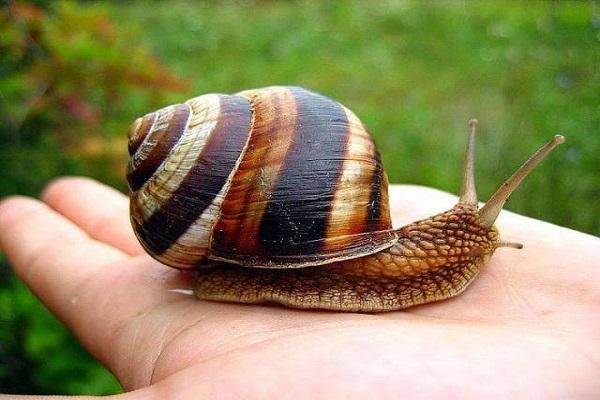
Reproduction methods
Calistegia reproduces only in a vegetative and generative way.
Seed breeding is ineffective because hybrid seeds do not inherit all the traits of the parent plant.
Root processes
Calistegia during the growth period gives a large number of root shoots that can be carefully dug up and planted in the right place at a distance of 20 cm and a depth of up to 5 cm, after pretreating the rhizomes with fungicides, and the cuts with charcoal. Then pour abundantly.
By dividing the rhizome
Reproduction by dividing the rhizome should be carried out in the spring. In March, extract the roots of the mother plant from the soil and divide. Sections, the size of which is 5-7 cm, should be planted horizontally in peat pots filled with soil to a depth of 3-5 cm. It is important to process the sections before planting using crushed charcoal or ash. At the end of planting work, moisten the soil in the pots. When the height of the seedlings is 5 cm, they need to be pinched to increase bushiness. In May, plant seedlings on a flower bed, having previously hardened them.

Cuttings
You can also propagate calistegia using cuttings.To do this, in the spring, cut off the stems with several buds, remove all the leaves, leaving 2-3 top leaves and send them to a solution with a stimulant for root growth. After that, root the cuttings at a temperature of 20-24 degrees, and then the appearance of roots can be expected in 5-7 weeks.
Growing problems
The main problem with growing Calistegia is that it tends to grow, forming young stems at a great distance from the mother plant. To prevent the uncontrolled spread of the flower, you need to build a barrier. To do this, plant the plant in a container without a bottom, dug into the soil. You can also take sheets of slate, plastic and bury them vertically into the soil, deepening at least 40 cm.
Another serious problem in the cultivation of calistegia is the invasion of snails and slugs, so you need to regularly inspect the plants and, at the first sign, promptly process the bushes with pesticides.
Kalistegia is a perennial vine that conquered many gardeners with its unpretentious care and lush flowering. And its intensive growth can, in the shortest possible time, embody any design ideas for landscaping the site.

